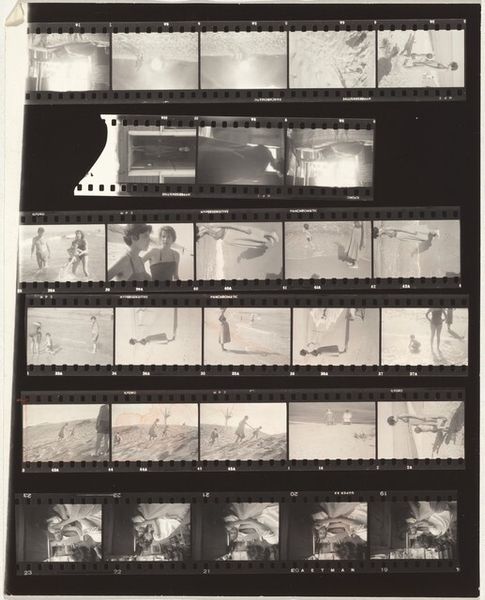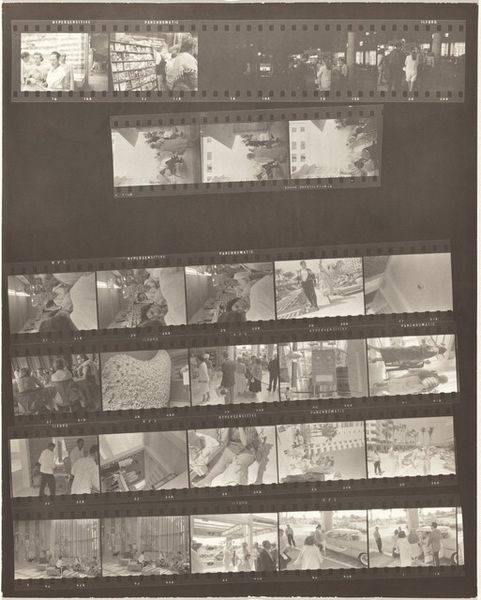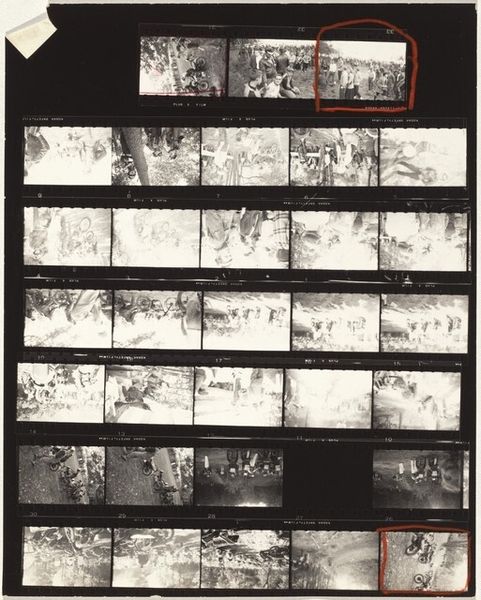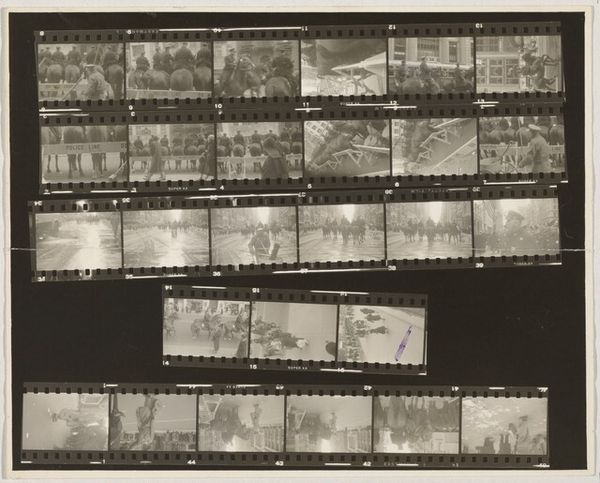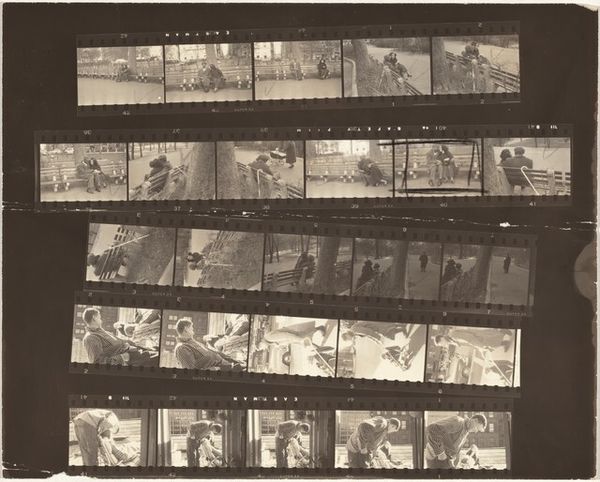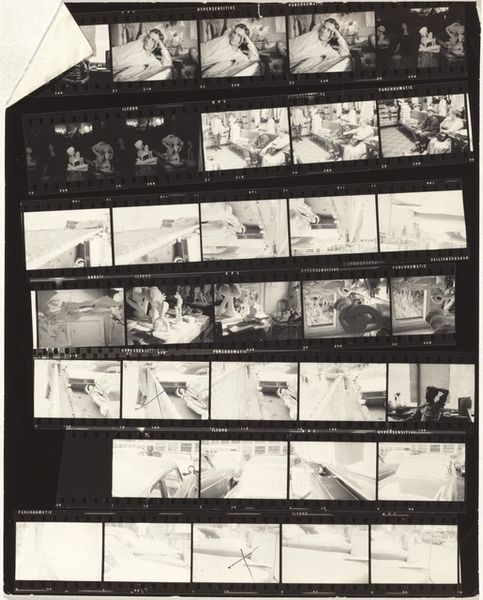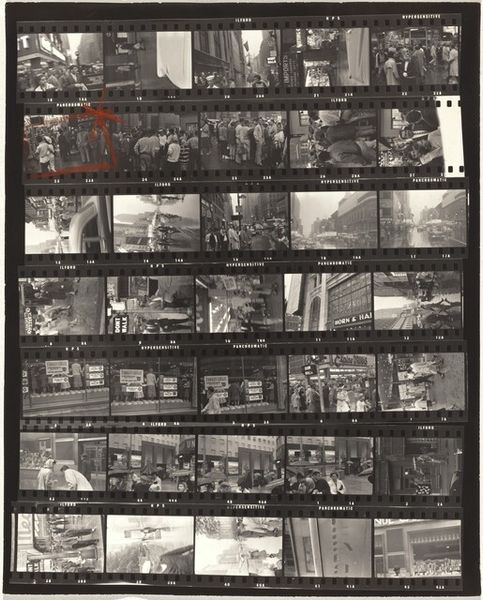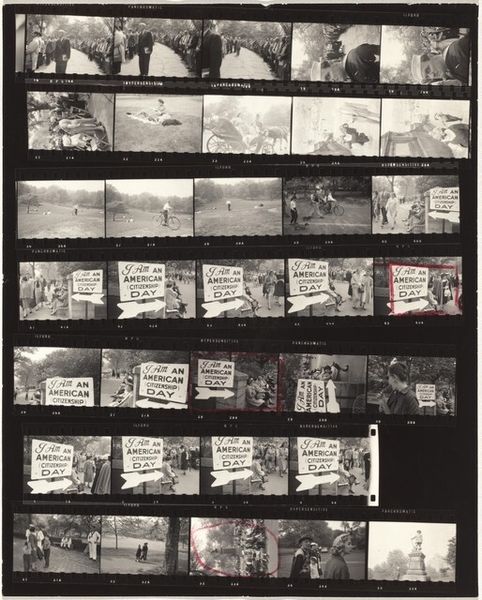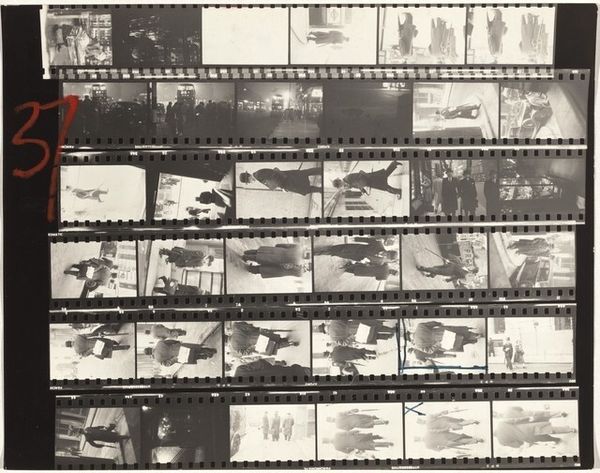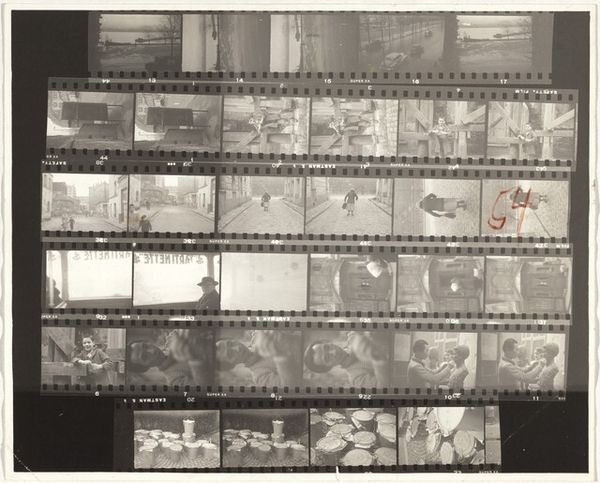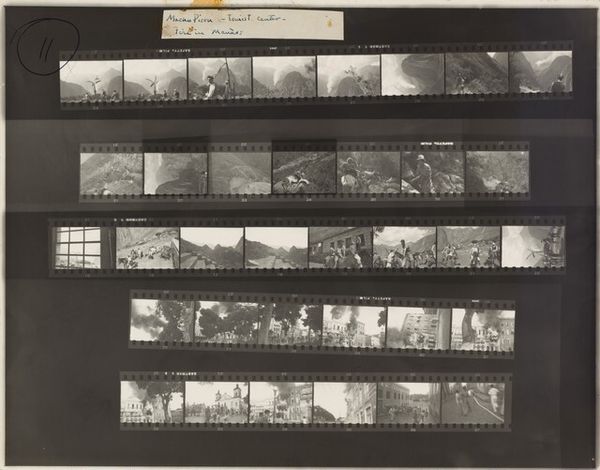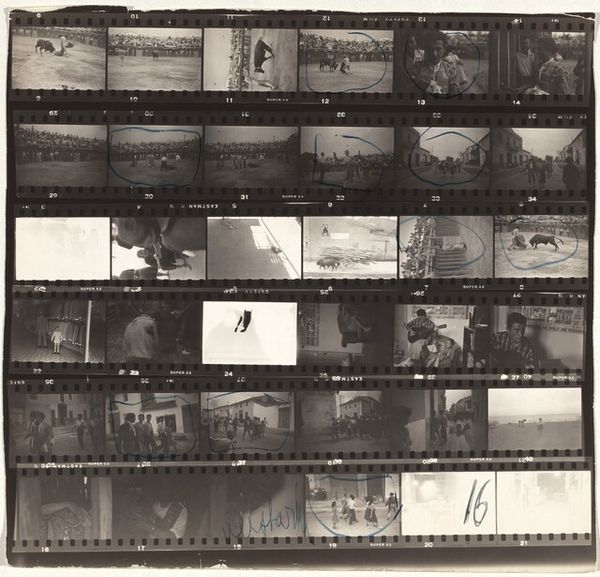
contact-print, photography
#
contact-print
#
street-photography
#
photography
#
new-york-school
#
realism
Dimensions: overall: 20.3 x 25.3 cm (8 x 9 15/16 in.)
Copyright: National Gallery of Art: CC0 1.0
Curator: Robert Frank's contact print, "Woolworth's--Early New York City 2," circa 1951, immediately gives a sense of visual chaos. A whole world is crammed onto this single sheet, but not presented for easy consumption. Editor: It feels unfinished, doesn’t it? Like a peek into Frank’s developing process, not the final polished statement. It certainly doesn't attempt to idealize New York City. Curator: Exactly. Seeing all these different frames, potential images, challenges the idea of the decisive moment in street photography so crucial to that period. We glimpse what went into constructing a single, finalized picture. Editor: And what was left out. Considering this was the early 1950s, how does the subject matter and technique potentially speak to social commentary, race, or class issues during that time in America? Curator: Frank was interested in the everyday and overlooked. Woolworth’s itself was a nexus of consumer culture, available to a broad demographic. Contact prints like this became important documents in understanding Frank’s critique of postwar American society, far from the romantic ideals of the period. We see glimpses of shoppers, shop windows, and city streets—snapshots of a rapidly changing urban environment. Editor: There's a definite gritty quality to this particular print, one that doesn't flatter or pretty up its subject. You've said Frank was interested in the overlooked—did the institutions and critics of the time take notice of this style of social critique? Curator: Initially, he faced a lot of resistance! His book "The Americans," published later in the decade, was heavily criticized for its unconventional style and what some saw as a negative portrayal of American life. It’s hard to imagine now, but this rawness, this very deconstruction of the photographic process, paved the way for later generations. It democratized how people viewed their world, beyond government narratives. Editor: The act of piecing together fragmented realities itself becomes a political gesture. Curator: Precisely. Frank urges us to question dominant narratives and create our own, offering not a neatly packaged image but rather a challenge to look closer at what often gets hidden in plain sight. Editor: The sheer density and unedited feeling reminds me that historical documents like these can reveal just as much in what they choose *not* to conceal. Curator: A truly radical notion then and something that echoes in how artists grapple with complex subject matter even today.
Comments
No comments
Be the first to comment and join the conversation on the ultimate creative platform.
